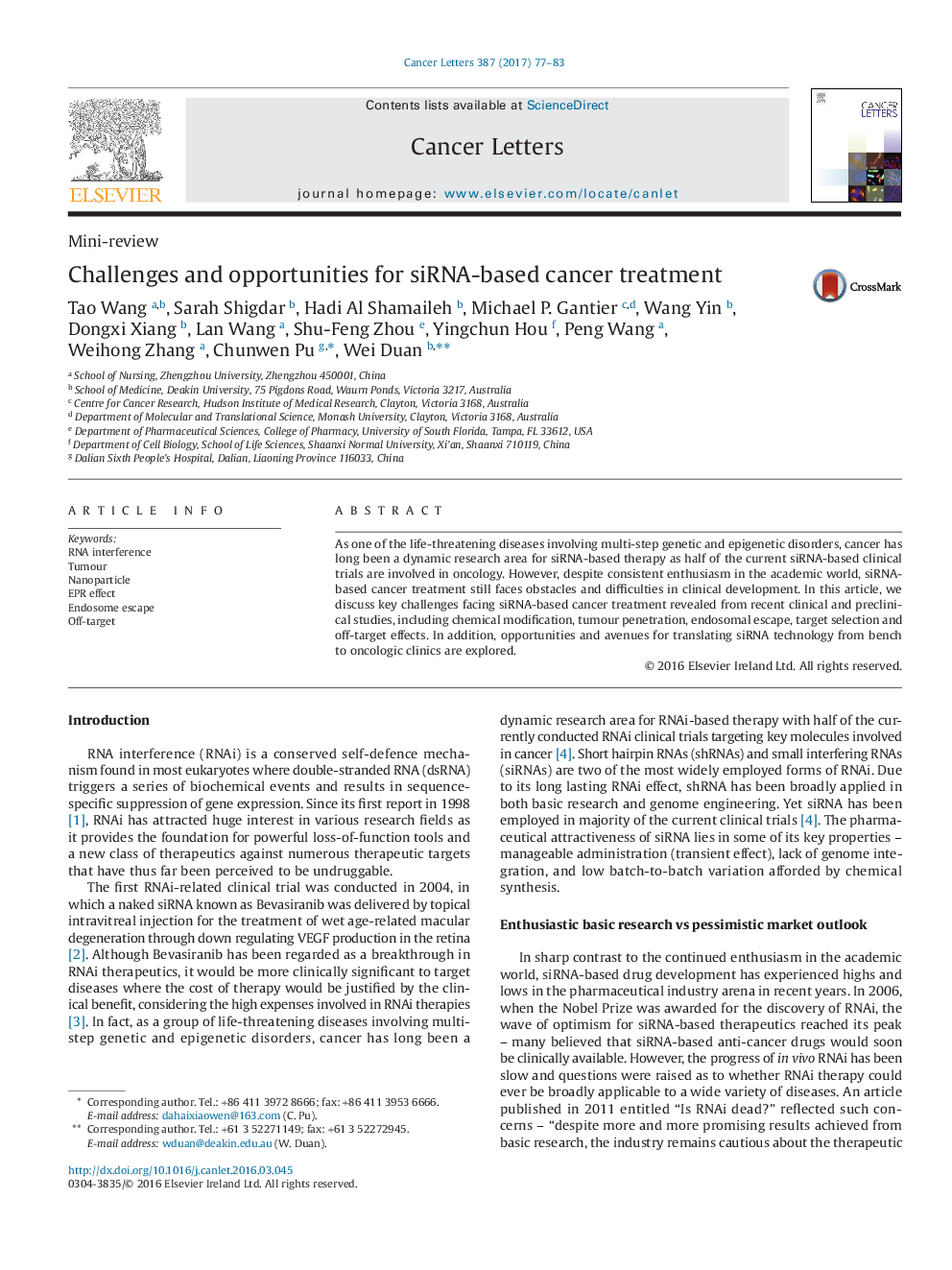| Article ID | Journal | Published Year | Pages | File Type |
|---|---|---|---|---|
| 5525441 | Cancer Letters | 2017 | 7 Pages |
â¢Distinct rules for chemical modification of siRNA and antisense oligonucleotide.â¢Optimised research model leads to predictable bio-distribution pattern of siRNAs.â¢Characterisation of endosomal escape aids future siRNA-based cancer treatment.â¢Gene target selection - cancer stem cell critical genes and multiple gene targeting.â¢Appropriate research controls and 5â²RACE assay ensure minimum off-target effect.
As one of the life-threatening diseases involving multi-step genetic and epigenetic disorders, cancer has long been a dynamic research area for siRNA-based therapy as half of the current siRNA-based clinical trials are involved in oncology. However, despite consistent enthusiasm in the academic world, siRNA-based cancer treatment still faces obstacles and difficulties in clinical development. In this article, we discuss key challenges facing siRNA-based cancer treatment revealed from recent clinical and preclinical studies, including chemical modification, tumour penetration, endosomal escape, target selection and off-target effects. In addition, opportunities and avenues for translating siRNA technology from bench to oncologic clinics are explored.
